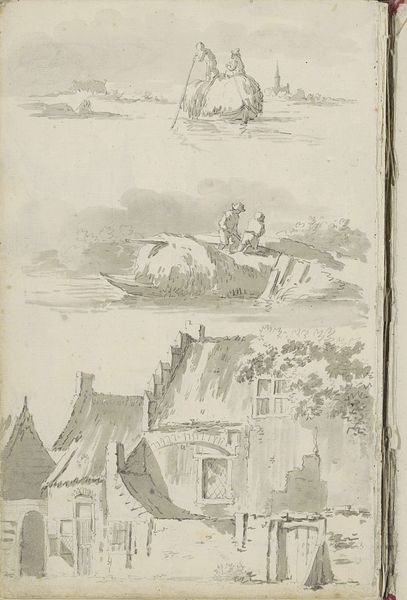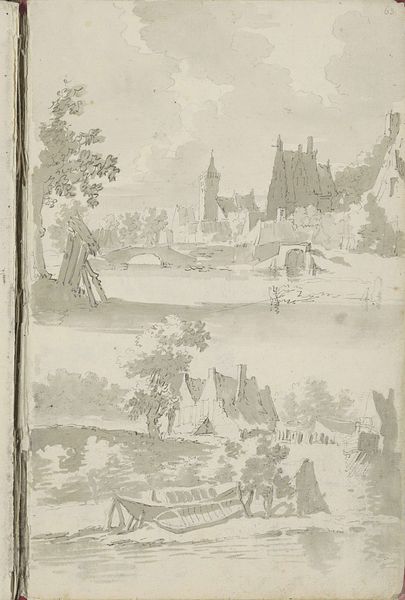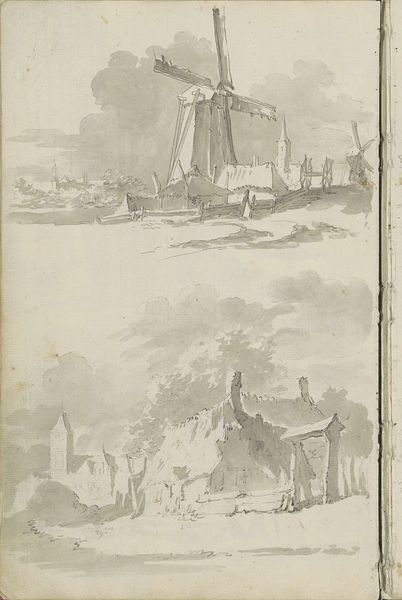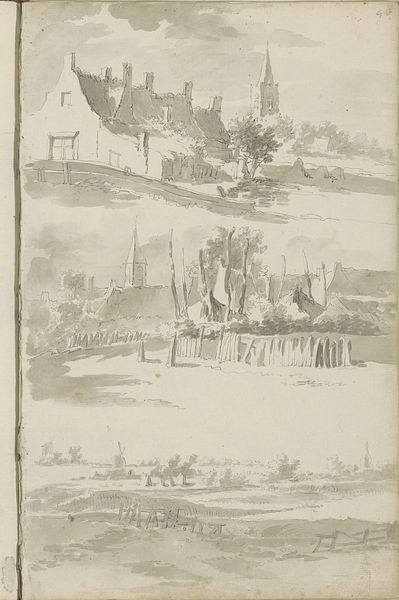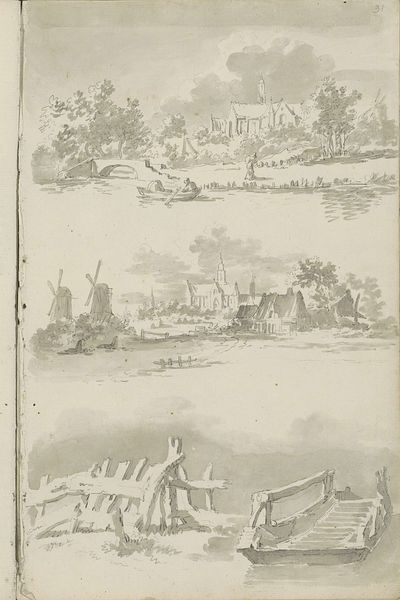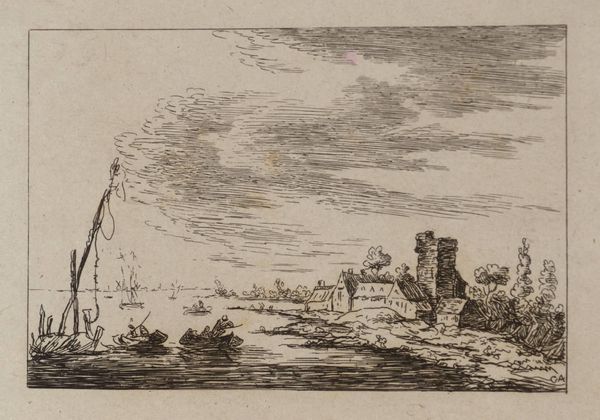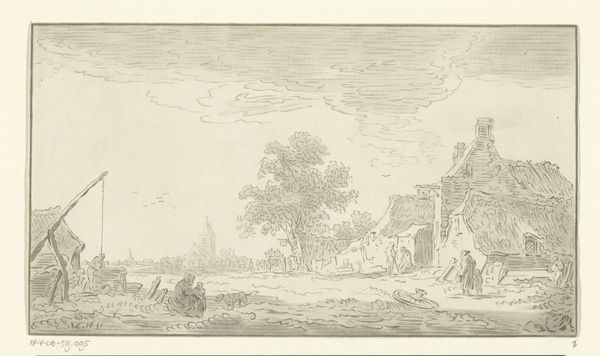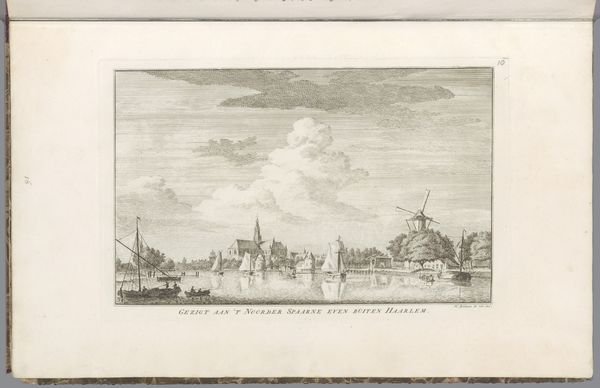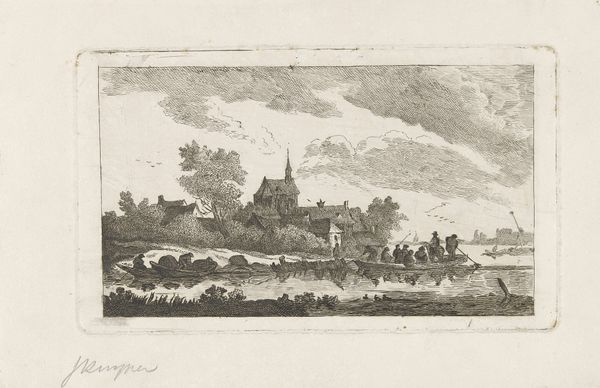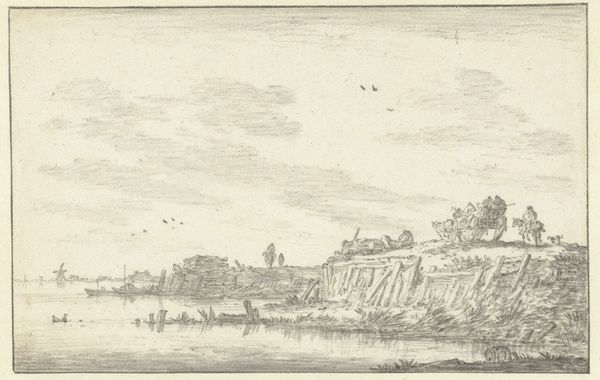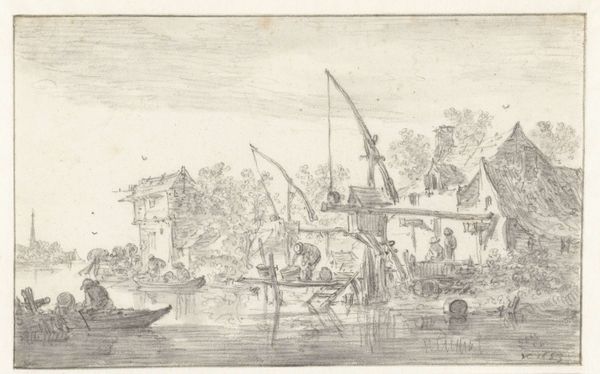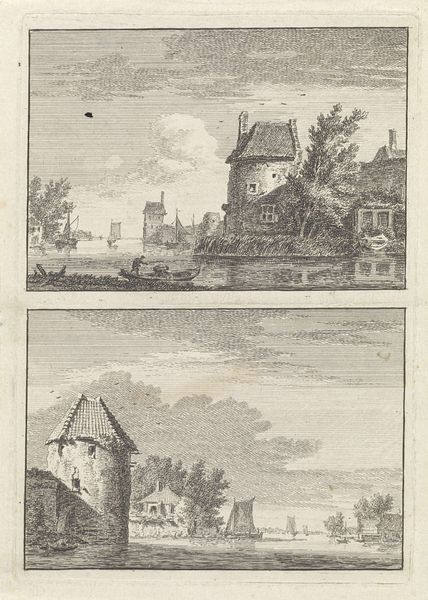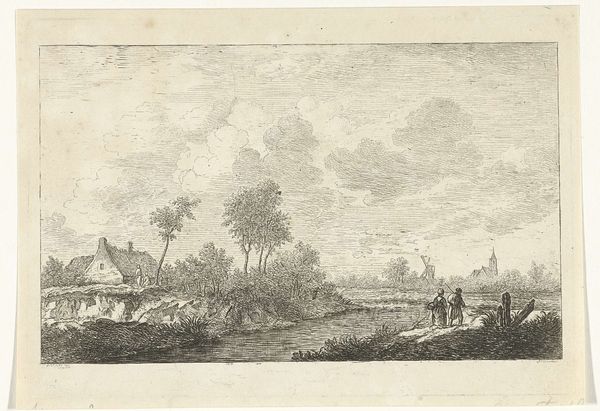
drawing, pencil
#
drawing
#
dutch-golden-age
#
pen sketch
#
pencil sketch
#
landscape
#
pen-ink sketch
#
pencil
#
15_18th-century
#
sketchbook drawing
#
cityscape
Copyright: Rijks Museum: Open Domain
Editor: So, this drawing, "Gezichten op twee dorpen aan het water," is attributed to Barend Hendrik Thier, created sometime between 1780 and 1800. It’s a pencil and pen sketch of two villages by the water. I'm struck by its simplicity; it feels like a quick glimpse into the past. What catches your eye in this piece? Curator: Well, placing this drawing within the context of the late 18th century, we can see how it reflects a particular shift in artistic and societal values. Think about the Dutch Golden Age which prized detailed realism. This sketch, however, moves towards a more intimate, less grandiose portrayal of the landscape. It seems like a personal record. Does that inform how you view its reception, knowing that the intended audience could have been quite small? Editor: That's a great point! Knowing it might be more personal shifts my understanding. I'm also curious about the composition, particularly the choice to show two separate village views on a single page. Does this tell us anything about the artist's intentions or the art market at the time? Curator: That division on the page might hint at the sketchbook origins. The art market of the late 18th century was evolving. Prints were becoming increasingly popular, offering a wider accessibility to art. But drawings like these still circulated, primarily among connoisseurs or as studies for larger works. The level of detail would determine its destination, from private collections to perhaps serving as models for prints themselves. How does this relate to the political landscape of the time? Editor: That makes sense. Politically, the late 18th century was turbulent. Perhaps this drawing, with its peaceful scenes of village life, offered a form of escapism or a subtle commentary on simpler times? Curator: Precisely. Or perhaps, it was also a form of preserving what they see for the coming generations. Ultimately, art served many functions, not always overtly political, but always situated within the broader cultural and historical context. What do we make of the way these kinds of images have shaped how we romanticize this historical period? Editor: I learned a lot about thinking through the drawing's market position during that era. It shifted my perspective. Curator: Absolutely, seeing art as a product of social and political forces really enriches our understanding.
Comments
No comments
Be the first to comment and join the conversation on the ultimate creative platform.
